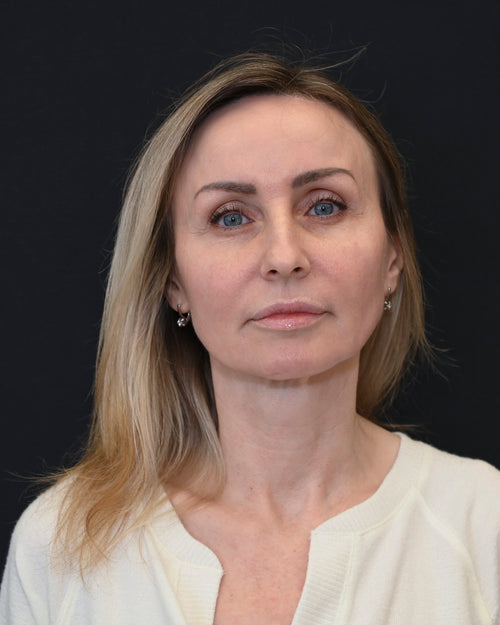Hyaluronic Acid Facts
Hyaluronic acid
(HA) is a polysaccharide (a type of carbohydrate) that is widely distributed in body tissues and is found at high concentrations in the synovial fluid in joints, vitreous humor (colorless, gel-like fluid in the eye), and skin. Since HA has a thick and sticky consistency and retains moisture, it helps the knee joint move smoothly and moisturizes the skin. Some factors that reduce the amount of HA in the body include aging, solar ultraviolet radiation, smoking, and air pollutants. Hyaluronic acid has been studied in osteoarthritis, aging skin, dry eyes, acid reflux, and wound healing. It comes in topical, oral (food grade HA), and injectable forms–the latter is considered a medical device.
Skin
Because Hyaluronic Acid (HA) functions as a lubricating agent in synovial fluid, it plays a role in inflammatory joint conditions like osteoarthritis. In a double-blind, randomized, placebo-controlled study of 60 male and female aged 22 to 59 who had crow's feet wrinkles (wrinkles near the corner of the eyes), taking a daily dose of Hyaluronic Acid (HA) for 12 weeks decreased skin wrinkles. A similar 12-week study conducted in 41 male and female aged 30 to 65 revealed that taking a daily dose of Hyaluronic Acid orally for 12 weeks improved skin wrinkles. Another 12-week clinical trial with 129 female participants, including young and elderly groups and different skin types, showed improvements in skin hydration, tone, and thickness in both age groups.
Dry Eye
A randomized clinical trial of 76 people over 19 years of age with dry eye disease showed that applying Hyaluronic Acid improved signs and symptoms in people with moderate to severe dry eye disease.
A meta-analysis indicated that treatment with HA eye drops alone reduced dry eye signs and symptoms in people with dry eye disease compared with non-HA-based eye drops.
Acid Reflux
A study of 51 people aged 25 to 75 with laryngopharyngeal reflux (LPR) symptoms showed that HA combined with chondroitin sulfate significantly reduced LPR-related symptoms such as chronic cough and hoarseness when given with proton pump inhibitor (PPI) therapy. Since HA was used in combination with chondroitin sulfate, it is unclear if the effect was from HA alone, chondroitin sulfate, or both when combined with PPI therapy.
Wound Healing
A randomized controlled study of 30 healthy females aged 20 to 60 years, undergoing tooth extraction showed a higher wound closure after tooth removal using the HA gel and spray treatment compared to the control group.11 However, it is important to note that the study was limited due to a small sample size.
In a multicenter study of 168 people with chronic leg ulcers of venous or mixed (venous and arterial) origin, treatment with 0.2% HA cream daily for 20 weeks resulted in a higher healing rate than a comparable cream without HA. However, it is unknown whether these results apply to most people since the study was conducted in people only in Poland.12
Chronic pain
A randomized, double-blind, placebo-controlled clinical study of 72 people ingesting Hyaluronic Acid orally during the first two weeks of the study resulted in reduced pain and pain medication usage.
Gingivitis (gum disease)
A double-blind parallel three-arm clinical trial was conducted in 75 people aged 18 to 23 years with biofilm-induced gingivitis. All three interventions significantly reduced the plaque index (PI)
Osteoporosis
One combination study showed that adding sodium hyaluronate, a derivative of Hyaluronic Acid to a treatment was successful at relieving pain in people with osteoporosis associated with knee osteoarthritis. Due to the combination therapy with glucosamine, the efficacy of Hyaluronic Acid alone for osteoporosis is unclear.
Urinary tract infections
A study conducted in males and females with spina bifida and neurogenic bladder who performed clean intermittent catheterization (a technique for bladder drainage) showed that application of Hyaluronic Acid reduced symptomatic recurrent urinary tract infections.
Vaginal dryness
In a multicenter study of 53 people in menopausal transition, vaginal dryness decreased in the Hyaluronic Acid treatment groups.
Hydrolyzed Collagen Supplements
Hydrolyzed collagen is a type of collagen that is broken down into smaller peptides for better absorption. When combined with hyaluronic acid, which is known to support the skin’s moisture retention, it can help maintain healthy, supple skin.
Make ArcticCollagen's hydrolyzed collagen supplements a part of your daily routine to elevate your skincare. Enriched with hyaluronic acid, our hydrolyzed collagen supports your skin's health while providing deep hydration. Try this powerful combination today and achieve a beautiful glow from within.
ArcticCollagen Success Stories
Wondering how a daily collagen supplement can boost your skin, hair and overall wellness? These transformation stories from our customers show just how effective our formula is. Check out these before-and-after photos and discover what ArcticCollagen could do for you.
Let customers speak for us
Frequently Asked Questions
Factors like aging, sun exposure, environmental pollutants, smoking, etc., reduce the body's natural hyaluronic acid production, causing skin dryness and joint discomfort.
Taking hyaluronic acid orally helps reduce the appearance of wrinkles, boosts skin hydration and improves skin thickness and tone.
Yes, taking hyaluronic acid helps speed up wound closure and supports tissue repair.
Hydrolyzed collagen provides structural support, while hyaluronic acid improves the skin's moisture retention. When taken together, they help maintain hydrated, youthful-looking skin.























